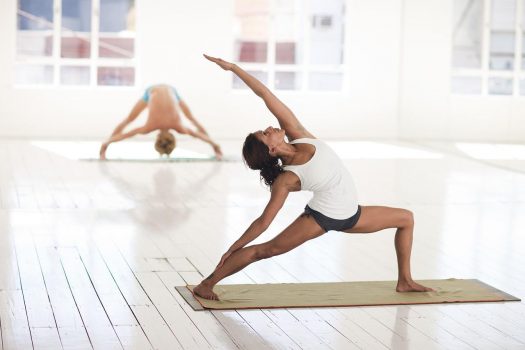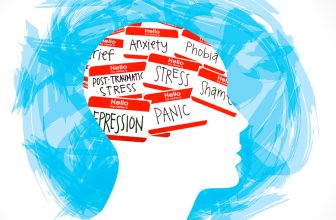Welcome to our blog post on the best meditations for relieving stress and anxiety! In today’s fast-paced world, it’s no wonder that many of us find ourselves feeling overwhelmed and anxious. But fear not, because meditation can be a powerful tool in your arsenal to combat these feelings and bring about a sense of calm and tranquility.
Whether you’re new to meditation or have been practicing for years, this article will introduce you to some effective techniques specifically designed to alleviate stress and anxiety. So grab a cushion, find a quiet space, and let’s dive into the wonderful world of meditation!
What is meditation?
Meditation, at its core, is a practice that allows us to cultivate mindfulness and awareness. It involves focusing our attention on the present moment, without judgment or attachment to thoughts or emotions. By doing so, we can tap into a deep sense of inner peace and stillness.
In essence, meditation is all about training our minds to be fully present in the here and now. It’s not about trying to stop our thoughts or emptying our minds completely. Rather, it’s about observing our thoughts as they arise and letting them pass by without getting caught up in them.
Through regular meditation practice, we can develop greater clarity of mind, improved concentration, and enhanced emotional well-being. It provides us with a space for self-reflection and introspection—a chance to explore the depths of our own consciousness.
Many different forms of meditation exist but they all share the same goal: helping us find balance amidst life’s chaos. From traditional seated meditations like mindfulness or loving-kindness meditation to more movement-based practices like yoga or Tai Chi—all have their unique benefits when it comes to relieving stress and anxiety.
So whether you choose to sit quietly in solitude or engage in gentle movements while focusing on your breath, there are endless possibilities when it comes to finding the right form of meditation for you. The key is consistency—making time each day for yourself and allowing your mind some much-needed respite from the demands of modern life.
Benefits of meditation for stress and anxiety
Meditation has been practiced for centuries, and its benefits for stress and anxiety are well-documented. It provides a powerful tool to calm the mind, reduce stress levels, and promote overall emotional well-being.
One of the key benefits of meditation is its ability to cultivate mindfulness. Mindfulness meditation involves focusing your attention on the present moment, without judgment or attachment to thoughts or emotions. By practicing mindfulness regularly, you can learn to observe stressful thoughts and feelings without becoming overwhelmed by them.
Another benefit of meditation is that it helps activate the body’s relaxation response. When we experience stress or anxiety, our bodies go into “fight-or-flight” mode, releasing cortisol and adrenaline into our bloodstream. Regular meditation practice helps counteract this response by activating the parasympathetic nervous system, which promotes relaxation and reduces stress hormones.
In addition to mindfulness meditation, guided meditations can be particularly helpful for those dealing with stress and anxiety. Guided meditations provide step-by-step instructions from a teacher or guide who leads you through various relaxation techniques. These sessions often incorporate soothing music or nature sounds that further enhance the calming effect.
Breathing techniques are another valuable component of a meditation practice for reducing stress and anxiety. Deep breathing exercises help regulate our autonomic nervous system by stimulating the vagus nerve – responsible for promoting relaxation in the body. By focusing on deep breaths in through your nose and out through your mouth, you can quickly feel a sense of calmness wash over you.
Body scan meditation is an effective technique that involves systematically scanning your body from head to toe while noting any sensations or areas of tension. This type of meditation allows you to become more aware of how stress manifests physically in your body so that you can consciously release tension as needed.
Incorporating different types of meditations into your routine will allow you to explore what works best for relieving your individual symptoms of stress and anxiety.
Mindfulness meditation
Mindfulness meditation is a powerful practice that can help alleviate stress and anxiety by bringing our attention to the present moment. It involves intentionally focusing on our thoughts, emotions, and bodily sensations without judgment. By cultivating this nonjudgmental awareness, we can learn to observe and accept our experiences as they are, rather than getting caught up in them.
During mindfulness meditation, we sit or lie down comfortably and bring our attention to the breath. We observe each inhalation and exhalation with curiosity and openness. As thoughts arise, we acknowledge them without attaching any meaning or significance to them. Instead of getting caught up in the stories created by our minds, we gently redirect our focus back to the breath.
Through consistent practice of mindfulness meditation, we develop greater self-awareness and emotional resilience. We become better equipped to notice when stress or anxiety arises within us and respond with compassion instead of reacting impulsively. This heightened awareness allows us to break free from automatic patterns of thinking that contribute to feelings of stress and anxiety.
In addition to reducing stress levels, mindfulness meditation has been shown to improve sleep quality, enhance focus and concentration, boost immune function, regulate emotions more effectively,and increase overall sense of well-being.
By incorporating mindfulness meditation into your daily routine,you can tap into its profound benefits for relieving stressand anxiety while cultivating a greater senseof peaceand inner calm.
Rest assured thatwith regularpractice,you’ll discoverthe powerof being fullypresentin the hereandnow
Guided meditation
Guided meditation is a powerful tool for relieving stress and anxiety. In this form of meditation, you are guided by an instructor or recorded audio to help you focus your mind and relax your body. The guidance provided can be through visualization, breathing exercises, or progressive muscle relaxation.
One of the benefits of guided meditation is that it takes away the guesswork and allows you to simply follow along. This makes it particularly helpful for beginners who may find it difficult to quiet their minds on their own. With the guidance of an instructor, you can easily tune into the present moment and let go of any worries or tensions.
During a guided meditation session, you will often be encouraged to visualize peaceful scenes or positive affirmations. This helps shift your attention away from stressful thoughts and redirects it towards more calming imagery.
Breathing exercises are also commonly incorporated into guided meditations. By focusing on deep belly breaths, you activate your body’s relaxation response and release tension in both your muscles and mind.
Guided meditation provides a structured approach for reducing stress and anxiety levels. It offers a sense of support as someone leads you through each step, helping to create a deeper state of relaxation. Give it a try if you’re looking for an effective way to ease stress and find inner peace.
Breathing techniques for relaxation
Breathing techniques are a powerful tool when it comes to relieving stress and anxiety. By focusing on your breath, you can bring yourself back to the present moment and cultivate a sense of calmness and relaxation. One effective technique is diaphragmatic breathing, also known as belly breathing. To practice this technique, sit or lie down in a comfortable position and place one hand on your chest and the other on your abdomen. Take a slow, deep breath in through your nose, allowing your abdomen to rise as you fill your lungs with air. Then exhale slowly through your mouth, feeling the tension release from your body.
Another popular breathing technique for relaxation is called 4-7-8 breathing. This technique involves inhaling deeply through your nose for a count of four, holding the breath for seven counts, and then exhaling slowly through pursed lips for a count of eight. Repeat this cycle several times until you start to feel more relaxed.
Alternate nostril breathing is another effective technique that can help balance the energy in our bodies and promote relaxation. Start by sitting comfortably with an upright posture. Use the thumb of one hand to close off one nostril while taking a slow deep breath in through the open nostril. Then use either another finger or thumb to close off that nostril while releasing the first one and exhaling slowly out of it.
These are just a few examples of breathing techniques that can be incredibly beneficial for reducing stress and anxiety levels. Experiment with different techniques to find what works best for you personally!
Body scan meditation
Body scan meditation is a powerful tool for relieving stress and anxiety. This practice involves systematically scanning your body from head to toe, bringing awareness to each area and releasing any tension or discomfort you may be holding.
To begin a body scan meditation, find a quiet and comfortable space where you can lie down or sit with good posture. Close your eyes and take a few deep breaths to settle into the present moment.
Start by directing your attention to the top of your head. Notice any sensations or tightness in this area, without judgment. Slowly move your focus down through each part of your body – forehead, eyes, cheeks, jaw, neck – releasing tension as you go.
As you continue scanning through the rest of the body – shoulders, arms, hands, chest, abdomen – bring gentle curiosity to each sensation that arises. If you encounter areas of pain or discomfort, simply acknowledge them without trying to change them.
With each breath outwards visualize letting go of any tension or negative energy stored within that specific part of the body. Gradually work your way down towards the legs and feet until you have scanned every inch of yourself.
Through regular practice of body scan meditation you may develop greater mind-body awareness as well as improved ability to identify areas where stress accumulates in your physical self. Ultimately leading towards deeper relaxation and relief from both stress & anxiety
Conclusion: Choosing the best meditation practice for your needs
Choosing the best meditation practice for your needs is a personal decision that requires some exploration and experimentation. What works for one person may not work for another, so it’s important to find the practice that resonates with you and brings you the most relief from stress and anxiety.
Mindfulness meditation can be a great starting point, as it helps cultivate awareness of the present moment and develop a non-judgmental attitude towards thoughts and emotions. This practice can help reduce stress by allowing you to observe your thoughts without getting caught up in them.
Guided meditation is another effective option, especially for beginners or those who struggle with staying focused during silent meditation. With guided meditations, an experienced teacher or recorded audio guides you through the process step by step, providing instructions on relaxation techniques or visualizations that promote calmness.
Breathing techniques are simple yet powerful tools for relaxation. By focusing on your breath and practicing deep breathing exercises, such as diaphragmatic breathing or alternate nostril breathing, you can activate your body’s natural relaxation response and decrease feelings of stress and anxiety.
Body scan meditation involves systematically scanning each part of your body with your attention while maintaining a relaxed state of mind. This practice promotes physical relaxation as well as mindfulness of bodily sensations, helping to release tension stored in muscles due to stress.
Remember that consistency is key when it comes to reaping the benefits of meditation. Whether you choose mindfulness meditation, guided meditation, breathing techniques, body scan meditation or a combination thereof – commit to practicing regularly in order to truly experience its transformative effects on stress reduction and overall well-being.
Incorporating any form of regular mediation into your daily routine has the potential to significantly improve how you respond to stressful situations throughout life. So take some time today to explore different types of meditations – experiment until you find what feels right for you!







